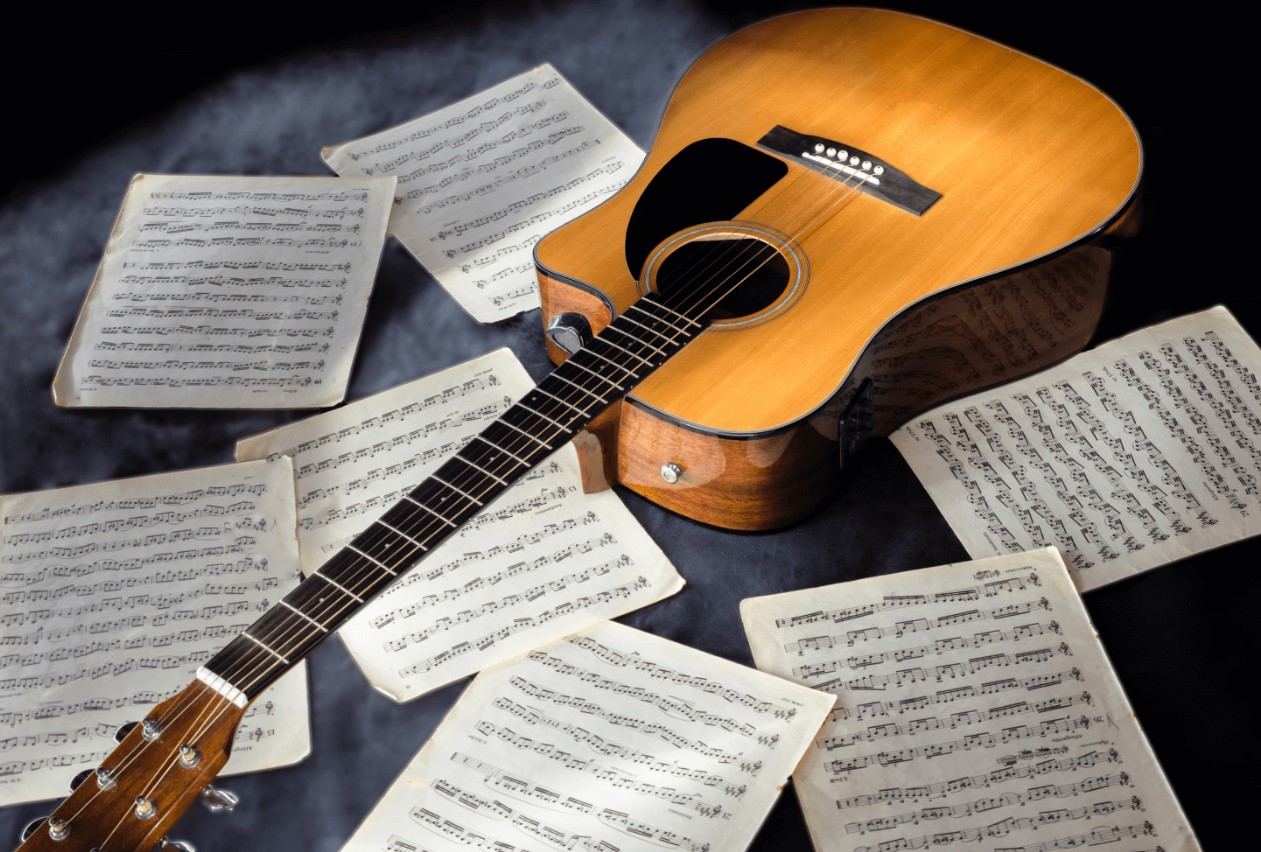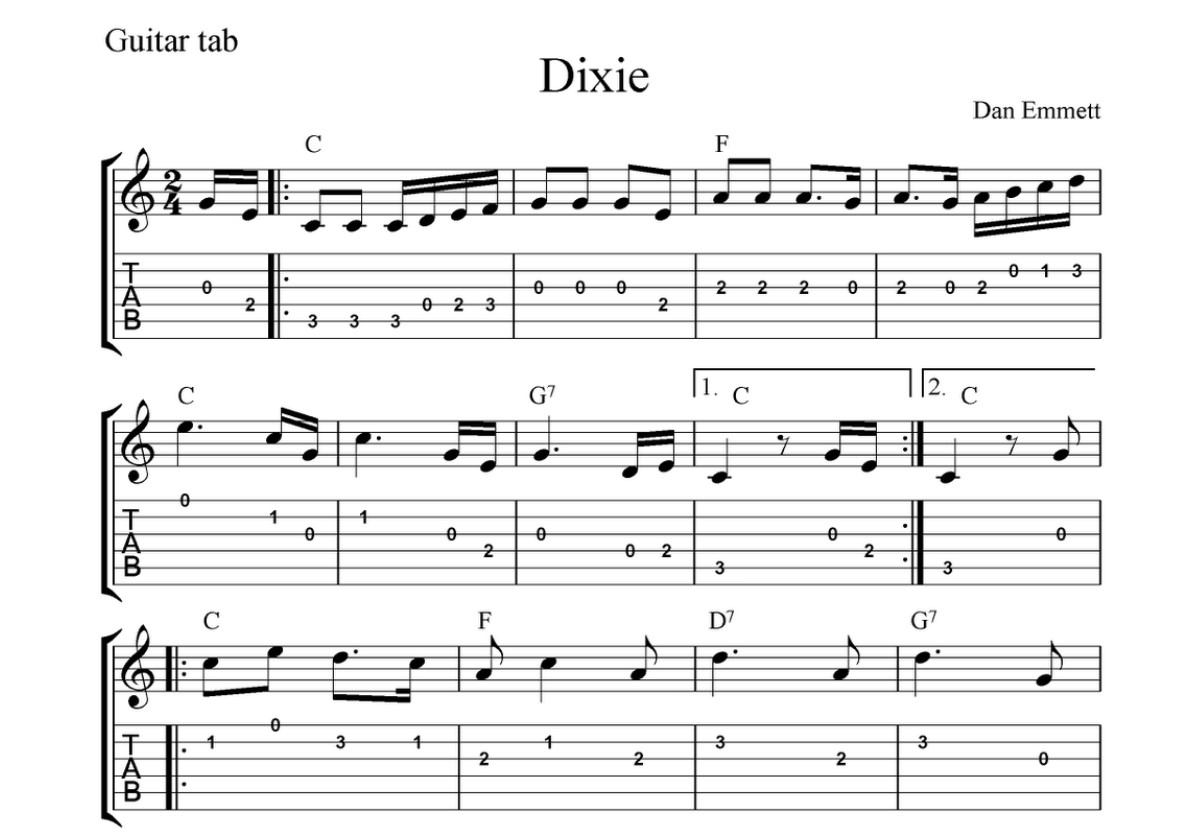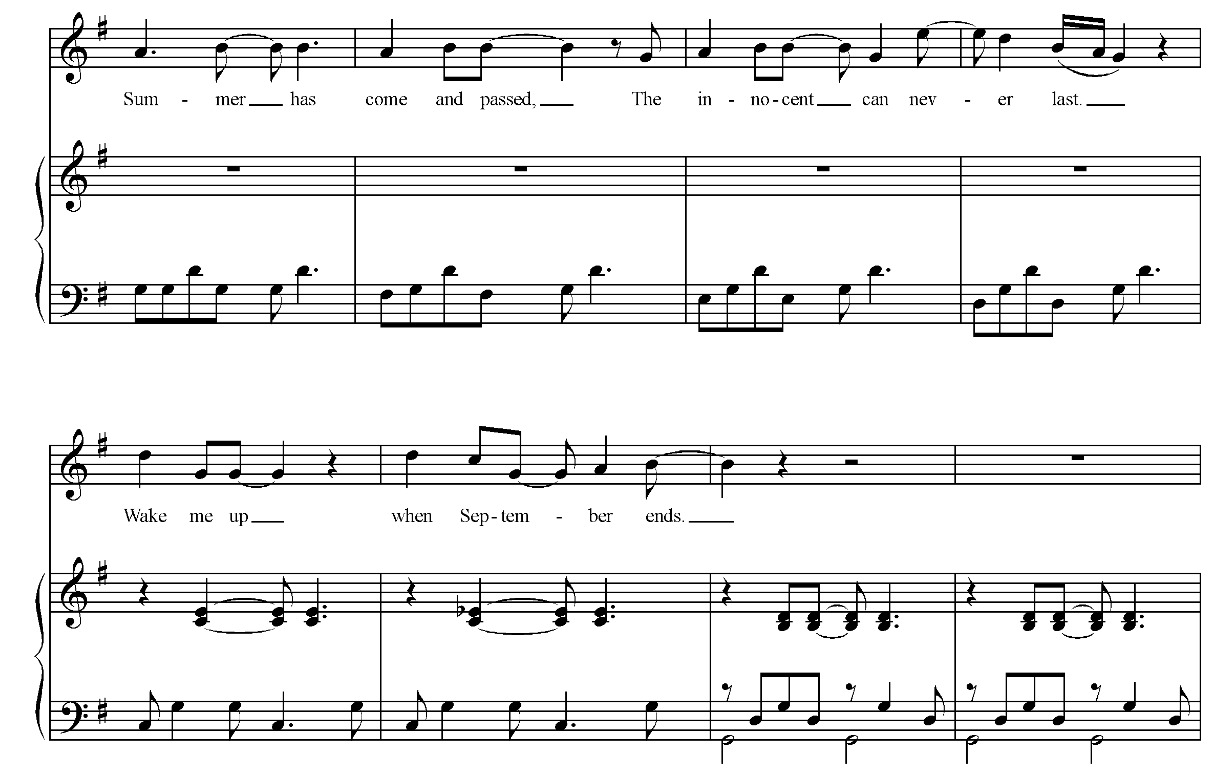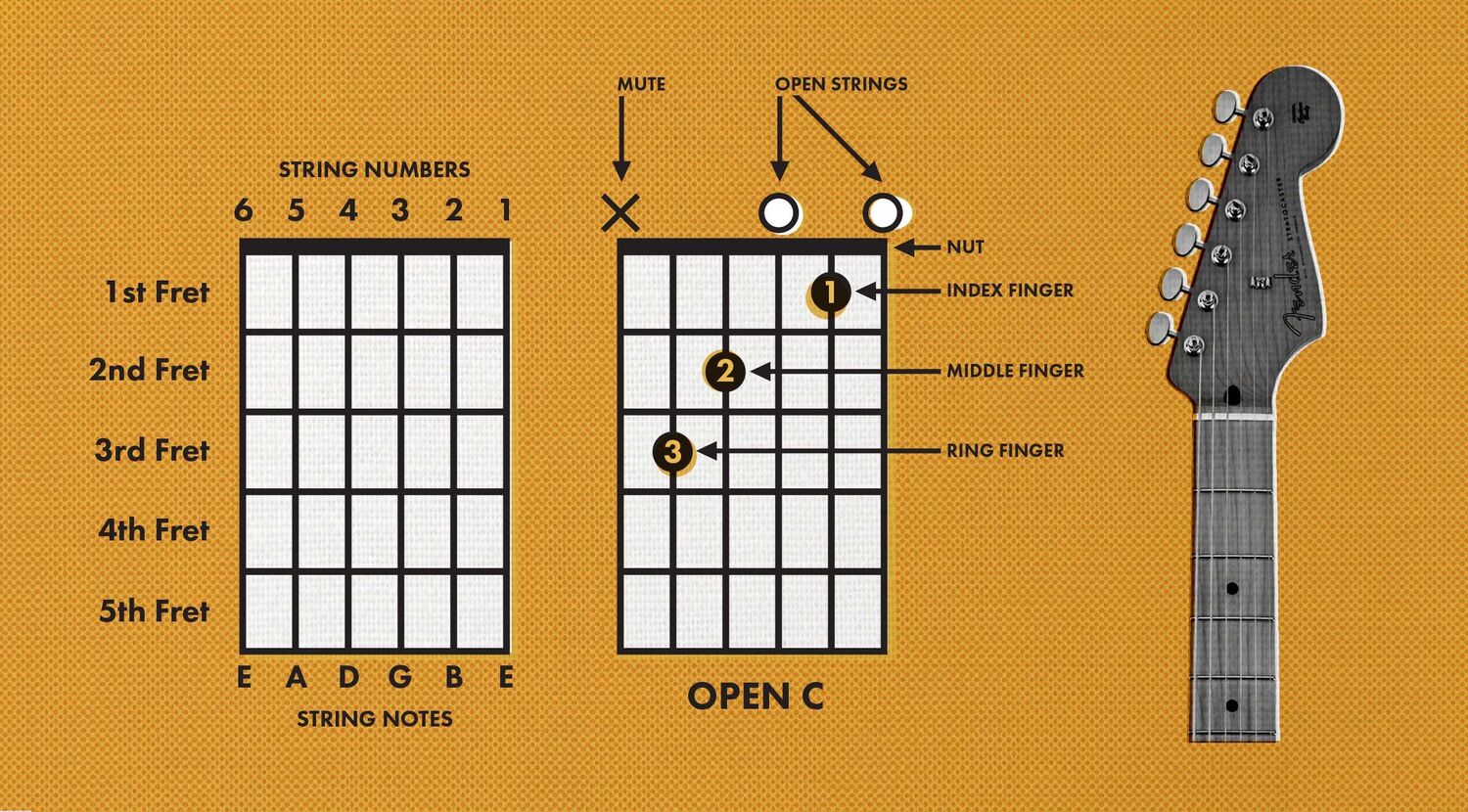Home>Instruments>Guitar>How To Read Bass Guitar Tabs


Guitar
How To Read Bass Guitar Tabs
Modified: February 15, 2024
Learn how to read bass guitar tabs and improve your guitar playing skills with our comprehensive guide. Master the art of reading guitar tabs and play your favorite songs effortlessly.
(Many of the links in this article redirect to a specific reviewed product. Your purchase of these products through affiliate links helps to generate commission for AudioLover.com, at no extra cost. Learn more)
Table of Contents
Introduction
Unlocking the World of Bass Guitar Tabs
Mastering the art of reading bass guitar tabs is a pivotal skill for any aspiring bassist. Whether you’re a novice musician or a seasoned player looking to expand your repertoire, understanding bass guitar tabs opens up a world of musical possibilities. While traditional sheet music provides a comprehensive notation system, bass guitar tabs offer a more accessible and intuitive way to learn and play the instrument. In this comprehensive guide, we’ll delve into the fundamentals of bass guitar tabs, deciphering the intricate symbols and notes that form the backbone of this musical notation system. By the end of this journey, you’ll be equipped with the knowledge and techniques to navigate bass guitar tabs with confidence, empowering you to bring the low-end groove to any musical ensemble.
So, grab your bass guitar, tune those strings, and let’s embark on an enlightening exploration of bass guitar tabs. Whether you’re aiming to jam along with your favorite tunes or compose your own bass lines, the insights and strategies you’ll gain from this guide will set you on the path to musical mastery. Let’s dive in and uncover the secrets of reading bass guitar tabs!
Understanding the Basics of Bass Guitar Tabs
Decoding the Language of Bass Guitar Tabs
Before delving into the intricacies of reading bass guitar tabs, it’s essential to grasp the fundamental structure and purpose of this popular notation system. Unlike traditional sheet music, which utilizes standard notation to represent musical elements, bass guitar tabs provide a simplified visual representation of the instrument’s fretboard. At first glance, a bass guitar tab may appear as a series of numbers, lines, and symbols, but each component serves a specific function in conveying essential musical information.
Tab Lines: A typical bass guitar tab consists of four horizontal lines, each representing a string on the instrument. The top line corresponds to the highest-pitched string (G), while the bottom line represents the lowest-pitched string (E). This layout mirrors the physical arrangement of the bass guitar’s strings, offering a clear visual reference for fretting and playing specific notes.
Numbers and Fret Positions: Within the tab lines, numbers are used to indicate the fret positions where notes should be played. A ‘0’ signifies an open string, while other numbers denote the fret to be pressed down. By aligning the numbers with the appropriate string, bass guitar tabs provide a straightforward method for visualizing note locations and finger placements on the fretboard.
Rhythmic Notation: While bass guitar tabs excel in representing note pitches and string locations, they may not always convey precise rhythmic information. In some tabs, rhythm is indicated through the spacing of the numbers, with closer spacing representing shorter note durations. However, for more intricate rhythmic details, additional notation or a separate rhythm chart may be included alongside the tab.
Articulation and Techniques: Beyond note pitches and fret positions, bass guitar tabs incorporate symbols and abbreviations to denote various playing techniques and articulations. These may include hammer-ons, pull-offs, slides, bends, and muting instructions, offering valuable insights into the nuanced expressions and embellishments that define a bass line’s character.
By familiarizing yourself with these foundational elements of bass guitar tabs, you’ll develop a solid understanding of how this notation system visually represents musical concepts. As we venture deeper into the realm of bass guitar tabs, we’ll explore the nuanced nuances of note reading, technique interpretation, and effective practice strategies to elevate your bass playing prowess.
Reading Notes and Symbols in Bass Guitar Tabs
Unlocking the Musical Code within Bass Guitar Tabs
As you immerse yourself in the world of bass guitar tabs, it’s crucial to decipher the various notes and symbols that populate this unique form of musical notation. Each element within a bass guitar tab serves as a vital signpost, guiding you through the intricacies of a bass line and illuminating the nuances of a musical composition. Let’s unravel the essential notes and symbols found in bass guitar tabs, empowering you to navigate this visual language with confidence and proficiency.
Note Representation: In bass guitar tabs, notes are denoted by numerical values placed on the corresponding string and fret positions. These numbers indicate the specific pitches to be played, allowing you to map out melodic sequences and harmonic progressions with precision. By aligning the numbers along the tab lines, you can visualize the sequence of notes and execute them on your bass guitar’s fretboard.
Articulation and Technique Symbols: To convey the expressive elements of a bass line, tabs incorporate a diverse array of symbols and abbreviations that elucidate various playing techniques and articulations. These may include:
- Hammer-ons (h): Indicates a technique where a note is sounded by “hammering” onto the fret without re-plucking the string.
- Pull-offs (p): Denotes a technique where a finger releases a fretted note to produce a lower-pitched note without re-picking the string.
- Slides (/ or ): Represents the action of smoothly transitioning between two notes by sliding a finger along the fretboard.
- Bends (b): Signifies the bending of a string to alter the pitch of a note, adding expressive flair to the music.
- Palm Muting (P.M.): Instructs the player to lightly rest the picking hand on the strings near the bridge, producing a muted and percussive sound.
Repeat Signs and Endings: Within bass guitar tabs, repeat signs and endings are utilized to designate specific sections of a musical piece that should be played multiple times. These markings ensure clarity and coherence in navigating the form and structure of a composition, allowing for seamless repetition and progression within the music.
By acquainting yourself with these essential notes and symbols, you’ll gain a comprehensive understanding of how bass guitar tabs encapsulate the nuanced intricacies of bass playing. As we venture further into the realm of tab reading techniques and effective practice strategies, you’ll harness this knowledge to unlock the full potential of your bass guitar prowess, infusing your playing with depth, expression, and musicality.
Learning Techniques for Reading Bass Guitar Tabs
Mastering the Art of Tab Interpretation and Execution
As you embark on the journey of mastering bass guitar tabs, honing specific techniques and approaches will significantly enhance your ability to interpret and execute musical compositions with precision and artistry. Let’s delve into essential strategies and methods for effectively reading bass guitar tabs, empowering you to elevate your playing and unlock the expressive potential of the instrument.
Visual Mapping and Fretboard Familiarity: When confronted with a bass guitar tab, take a moment to visually map out the note locations on the fretboard. By mentally connecting the tab notation to the physical layout of the bass guitar’s strings and frets, you’ll develop a heightened spatial awareness that streamlines your playing. Over time, this visual mapping will become intuitive, allowing you to swiftly navigate the fretboard and execute notes with precision.
Rhythmic Interpretation and Internalization: While some bass guitar tabs provide rhythmic notation, others may rely on the player’s familiarity with the song’s timing and groove. To enhance your rhythmic interpretation, listen closely to the original recording of the music and internalize the rhythmic feel. By immersing yourself in the song’s pulse and groove, you’ll intuitively align your playing with the rhythmic nuances of the composition, infusing your performance with authenticity and dynamism.
Technique Integration and Articulation: Beyond the fundamental notes and fret positions, pay close attention to the articulation symbols and techniques indicated in the bass guitar tabs. Experiment with incorporating hammer-ons, pull-offs, slides, bends, and other embellishments into your playing, infusing the music with expressive flair and character. These techniques not only enrich the sonic texture of the bass line but also amplify your musical expression, allowing you to convey emotion and depth through your playing.
Contextual Understanding and Musical Phrasing: Approach bass guitar tabs with a keen awareness of the broader musical context. Consider the song’s structure, dynamics, and overall narrative, and strive to interpret the tab within the larger framework of the music. By embracing musical phrasing and nuanced dynamics, you’ll breathe life into the notes on the page, crafting compelling bass lines that resonate with the song’s essence and spirit.
By integrating these techniques into your practice and performance, you’ll harness the full potential of bass guitar tabs, transforming them from static notations into dynamic blueprints for musical expression. As you continue to refine your tab reading skills and explore new musical horizons, these techniques will serve as invaluable tools for elevating your bass playing to new heights of creativity and artistry.
Tips for Improving Your Bass Guitar Tab Reading Skills
Refining Your Tab Interpretation and Performance
Enhancing your proficiency in reading bass guitar tabs involves a blend of focused practice, attentive listening, and a deep understanding of musical nuances. By embracing targeted strategies and adopting a growth-oriented mindset, you can elevate your tab reading skills and infuse your bass playing with clarity, precision, and expressive depth. Here are valuable tips to guide you on your journey toward mastery:
Consistent Practice and Repetition: Dedicate regular practice sessions to reading and playing bass guitar tabs. Repetition fosters familiarity, allowing you to internalize the visual patterns and note sequences within the tabs. As you repeatedly engage with diverse tablatures, you’ll develop a keen eye for recognizing common motifs and structures, enhancing your fluency in interpreting and executing bass lines.
Active Listening and Song Familiarity: Listen attentively to the music associated with the bass guitar tabs you’re learning. Immerse yourself in the sonic landscape of the song, paying close attention to the bass line’s interactions with other instruments and the overall rhythmic feel. By cultivating a deep familiarity with the song, you’ll intuitively grasp the contextual nuances embedded within the tab notation, enriching your interpretation and infusing your playing with authenticity.
Collaborative Playing and Ensemble Experience: Engage in collaborative music-making experiences, whether through jam sessions, band rehearsals, or virtual collaborations. Collaborative playing provides invaluable opportunities to apply your tab reading skills in a dynamic, interactive setting. As you synchronize your bass lines with other musicians, you’ll refine your ability to seamlessly integrate tab interpretations into cohesive musical performances, honing your adaptability and musical communication.
Exploratory Learning and Genre Diversity: Expand your tab reading repertoire by exploring diverse musical genres and styles. Venture beyond familiar territory and embrace tabs from genres such as funk, jazz, rock, blues, and beyond. Each genre presents unique rhythmic patterns, melodic phrasings, and articulation techniques, offering a rich tapestry of learning opportunities. By immersing yourself in diverse genres, you’ll cultivate a versatile skill set and broaden your musical horizons.
Reflective Analysis and Iterative Refinement: After practicing a bass guitar tab, take time to reflect on your performance and interpretation. Identify areas for improvement, whether in rhythmic precision, articulation clarity, or expressive dynamics. Embrace an iterative approach to refinement, continuously refining your tab reading skills through attentive self-assessment and targeted adjustments in your playing.
By integrating these tips into your musical journey, you’ll nurture a robust foundation for reading bass guitar tabs with confidence and proficiency. Embrace the process of growth, celebrate incremental progress, and immerse yourself in the transformative power of tab reading as you embark on a fulfilling exploration of musical expression and creativity.
Conclusion
Embarking on a Melodic Odyssey with Bass Guitar Tabs
Congratulations on embarking on a captivating exploration of bass guitar tabs, unraveling their intricate language and unlocking the boundless potential they hold for your musical journey. As you’ve delved into the depths of tablature interpretation and technique integration, you’ve equipped yourself with invaluable tools for expressing your musical voice and infusing your bass playing with depth, emotion, and artistry.
By understanding the foundational elements of bass guitar tabs, from note representation to articulation symbols, you’ve gained a comprehensive grasp of how this notation system visually encapsulates the richness of bass lines and musical compositions. Through dedicated practice, attentive listening, and collaborative engagement, you’ve honed your tab reading skills, cultivating a keen sensitivity to rhythmic nuances, expressive techniques, and contextual interpretations.
As you continue your journey, remember that tab reading is not merely a technical skill but a gateway to musical storytelling and self-expression. Embrace the diverse array of musical genres, styles, and compositions that await your exploration, and let the bass guitar tabs guide you through melodic odysseys that resonate with your soul and captivate your audience.
Whether you’re grooving to the infectious rhythms of funk, laying down solid foundations in rock, or exploring the harmonic complexities of jazz, the art of reading bass guitar tabs empowers you to articulate your musical vision with clarity and finesse. Embrace the iterative nature of growth, celebrate your progress, and revel in the transformative power of tab reading as you craft compelling bass lines that leave an indelible mark on the musical landscape.
So, pick up your bass guitar, immerse yourself in the enchanting world of tablature, and let your musical spirit soar as you weave captivating narratives through the evocative language of bass guitar tabs. Your journey is brimming with potential, and the melodic odyssey that awaits is yours to shape, explore, and savor. Let the rhythm guide your hands, the notes ignite your imagination, and the tabs be your trusted companions on this harmonious voyage.











